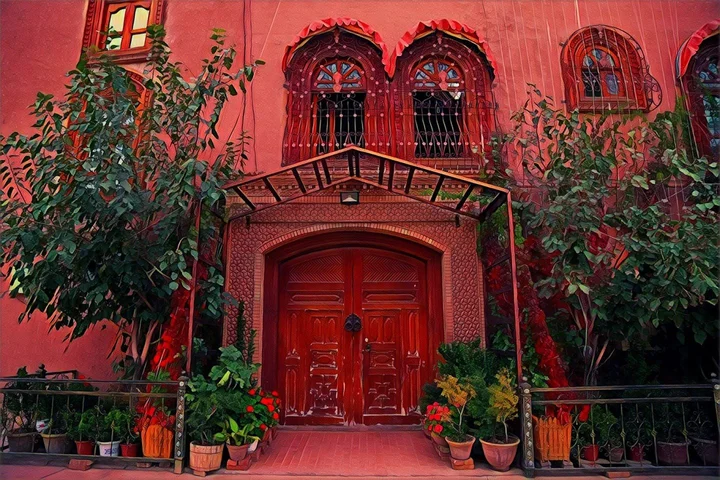The most western ancient city in China-Kashgar
"If you don't get to Kashgar, you don't count as Xinjiang, you don't get to the ancient city, you don't get to Kashgar." This ancient city with a history of more than 2,100 years is one of the most charming places in Xinjiang.
Kashgar
From the Wei, Jin, Southern and Northern Dynasties to the Sui Dynasty, there are records that say: The State of Shule has twelve large cities and dozens of small cities; its capital city is five miles wide. These records let us know for the first time the perimeter area of the ancient city of Kashgar. Although the location is not specified, it can be seen how big the ancient city is.

Kashgar
As the meeting point of the three major religions and the four major civilizations, the history of the old city of Kashgar is self-evident. Thousands of years ago, as the throat hub of East-West traffic, it was destined to become an important commercial port on the ancient Silk Road, where East-West trade economy and civilization collided and intersected.

For the locals, the soul of Kashgar (one of the old names) is in the old city of Kashgar, which represents the ancient past of the city, the peaceful present, and the prospect of the future. The ancient city of Kashgar, formerly known as Shule, is one of the thirty-six countries in the Western Regions, with a history of more than 2,100 years. The earliest record can be found in the ancient Shule recorded by Zhang Qian in the Western Han Dynasty.

At that time, Kashgar, where Zhang Qian went, was already quite large, and it seemed to be an international market on the ancient Silk Road. It has been the largest city in southern Xinjiang for hundreds of years. It is not only the general interchange at the western end of the northern, central and southern lines of the ancient Silk Road, but also a transportation hub and commodity distribution center between China and the West. Trade is very developed, with "five ports linking eight countries, The geographical advantage of connecting Europe and Asia all the way.

This colorful ancient city, with its historical charm, humanistic art, unique flavor and enthusiasm of Kashgar people, has become the most representative historical and cultural landscape in Xinjiang, and it is also the first famous historical and cultural city in Xinjiang. With the development of tourism, more and more tourists are attracted here, and people gather here from all directions, as if the prosperity of the ancient silk road has reappeared.

But whether it is a visible history or an invisible history, the ancient architecture of Kashgar is definitely one of the best heritages left to us by history. Civil, brick and wood-structured dwellings are like a heavy book, recording the ups and downs of a hundred years and thousands of years ago. The rich ethnic customs and splendid history and culture are still vibrant among the bricks and woods.

Whether walking on a wide street or a narrow alley, the bonsai, flowers and the various colored floral decorations on the pillars, wood carvings and overhangs of the buildings complement each other, and at the same time, they are also scattered, sometimes more quiet and fresh. If you are lucky, you will encounter a small building built across the street at the junction of the two alleys, which looks like a porch, adding a bit of simplicity and depth to the alley.

There are about two or three hundred streets and alleys crisscrossing each other. If there is no "guidance" from the local people, it is very likely that they will be "lost" in the Kashgar style. But what you might not expect is that the direction of the road often depends on the tiles under your feet. If the brick is hexagonal, it is a bright road, and if the brick is quadrilateral, it is a dead end. Along the narrower and narrower alleys, through the houses that are built higher and higher, whether it is blocked or connected, you will often encounter surprising corners. But sometimes, it's like a maze of unpredictable, occasionally a wall, a family, a ruin.

It is unimaginable that the local people had such fun and wisdom more than 2,100 years ago to create such a unique and even unique architectural complex. And this flexible and changeable layout happens to be another charm of it. The old city of Kashgar is the only fully preserved labyrinth building urban block in China, and it is also one of the largest existing earth building complexes in the world.

It covers 171 individual tourism resources in 6 categories, including natural landscapes, relics, architectural facilities, cultural activities, and tourism commodities. It has 1 world-class intangible cultural heritage and 14 national-level intangible cultural heritages. Here, you can meet many craftsmen, whether it is pottery, iron, weaving, woodworking, etc., any handicraft born in the present is from the inheritance of thousands of years ago, and they may be integrated into it. The aesthetic elements of modern people, but the soul of the ancient craftsman remains unchanged.





